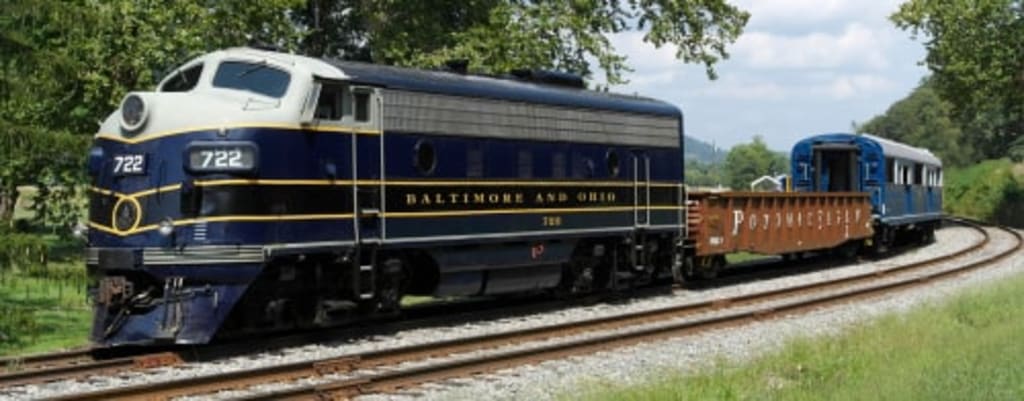35 Interesting Facts About Maryland
Maryland is the 19th most populous and the 42nd most extensive of the 50 states of the United States. It is a state in the Mid-Atlantic region of the United States. The state attained statehood on April 28, 1788, becoming the 7th state to join the union. Its four bordering states are Delaware, Pennsylvania, Virginia, and West Virginia. Maryland (nicknamed: Cockade State, Free State, Monumental State, Old Line State, Terrapin State) has 23 counties and one independent city (Baltimore City). The state’s capital is Annapolis. People who live in MD or who come from Maryland are referred to as Marylanders. The postal abbreviation for Maryland is MD. With these facts about Maryland, let us learn more about its history, geography, economy, people, culture, and much more.

Facts about Maryland
1. Paleo-Indians first inhabited what is now the state of Maryland. Archaeologists have found artifacts such as beads and arrowheads that date back to 13,000 years ago. They believe the Paleo-Indians came from other parts of North America to hunt bison and caribou. In later years, Native American tribes moved into the region, including the Lenape, Nanticoke, Susquehannock, Shawnee, and Powhatan tribes.
2. Maryland gets its name from Queen Henrietta Maria of England. Her husband, George Calvert created the colony, but before the settlement could begin, he died and his son Cecilius continued on. Cecilius, who wanted to create safe place for Roman Catholics that were coming from England.[9]
3. Maryland is sometimes called “America in Miniature”. It has a wide topography that ranges from gently rolling hills to pine groves, to sandy dunes, and marshlands near the Chesapeake Bay. Maryland is home to lakes, rivers, and the Atlantic ocean. 400 types of birds, 90 species of mammals, 93 species of reptiles and amphibians, and hundreds of freshwater and marine fish inhabit the borders of Maryland.[17]
4. The Chesapeake Bay is the largest of more than 100 estuaries (a partially enclosed body of water where fresh water from rivers and streams mixes with salt water from the ocean) in the United States. It splits Maryland into two halves. Captain John Smith was one of the first Europeans to visit the bay.[26,27]
5. MD joined the Union during the Civil War even though it was a slave state south of the Mason-Dixon line. Being a border state, it had major divisions in its support, even among family members. The state was a battleground where some of the most decisive battles of the war were fought.
6. In Sharpsburg, Maryland, the Battle of Antietam was fought on September 17, 1862. The battle is considered as the bloodiest battle of the American Civil war because an estimated 23,000 soldiers were killed, wounded or missing after twelve hours of savage combat. According to some sources, it is also the eighth-costliest land battle of the American Civil War.[29,30]
7. Maryland has a state crustacean. The blue crab was named the state crustacean (crustacean comes from the Latin word crusta, which means shell) in 1989. The blue crab is commonly called the “Maryland crab”, even though a large amount of blue crabs are caught off the waters of Virginia. The crabs are in peak season from April to November, and Marylanders are known to eat their crabs with Old Bay or Chesapeake Bay seasoning.[10]
8. Another Maryland nickname is the “Old Line State”. During the Revolutionary War, 400 American soldiers led by Colonel William Smallwood, fought against 10,000 British soldiers in a 1776 battle. The “Maryland Line” was able to hold off the advancing British soldiers long enough for George Washington, leading the remaining American soldiers, to make their escape.[12]
9. Maryland’s state song is controversial. “Maryland, My Maryland” was written by a Confederate sympathizer. Although it wasn’t adopted as the state song until 1939. The song is a nine stanza poem that is sung to the tune of “Oh Tannenbaum”. In the song, President Abraham Lincoln is referred to as a tyrant and the Union troops as Northern scum. Numerous attempts have been made over the years to replace it. But as of now, the song remains and is still being sung by Maryland school children.[13]
10. The first successful passenger balloon flight in the United States took place in Baltimore on June 24, 1784. It is said that a 13 year old boy from Baltimore embarked in this balloon since it was too small to carry its creator.[28]
11. Maryland’s baseball team is named after a poem. The Baltimore Ravens are named after the famous poem, The Raven, by Edgar Allen Poe. Poe was from Baltimore and his house is now a historical landmark that is open for tours.[3]
12. Harriet Tubman was born into slavery in Maryland. Although born into slavery, Harriet Tubman rose above her traumatic past and became a historic leader, fighting against slavery. Part of her famous underground railroad can be toured in Maryland at the Harriet Tubman Underground Railroad Visitor Center. The journey lasts 125 miles starting in Cambridge to Goldsboro passing through country roads to off state highways and part of the Great Chesapeake Bay Loop.[11]
13. The chance of a Maryland white Christmas is about 12 percent. It’s been since 2002 that the area experienced a white Christmas when rain turned into snow and accumulated one inch.[6]
14. MD has the narrowest width of any U.S. state – less than 2 miles in the Hancock area.[31]
15. The Great Baltimore Fire of 1904 lasted for 30 hours and resulted in standardized firefighting equipment. The fire destroyed 1,500 buildings and completely wiped out entire neighborhoods. Firefighters struggled to contain the blaze due to an issue with their hose couplings not matching up. The fire was the most destructive fire in the United States since the Great Chicago Fire of 1871.[15]
16. There is a town called Boring. Yes, it’s named boring, but the town is actually named after the first postmaster, David Boring. It’s a very small village, containing one church, one post office, and about 40 houses. It’s become a popular stop for visitors to take a break from the highway and have their picture taken on the front steps with the Boring Post Office sign in view.[7]
17. Francis Key Scott, a Maryland lawyer, wrote the “Star-Spangled Banner” in 1814. It became America’s national anthem in 1931. The Francis Key Scott bridge is a 1,200-foot long bridge that crosses the Patapsco River in Baltimore. It is the second longest continuous truss bridge in the nation.[2,14]
18. Helen Peters, a spiritual medium, coined the name, Ouija, the Egyptian Luck Board in 1890. A 7-Eleven convenience store in Baltimore displays a plaque, where the boardinghouse once stood where Helen Peters first began using the Ouija board.[8]
19. Annapolis, MD, is home to the United States Naval Academy. The Naval Academy was founded in 1845 and has been training officers for the Marine Corps and Navy ever since. Visitors can explore the campus and take a guided tour to get an up-close look at what student life in the academy is really like. There are many gorgeous, old buildings to see, from the main chapel to Bancroft Hall’s Memorial Chapel. For those lucky enough to be there around lunchtime, the daily noon formation of 4,000 midshipmen can be observed as they form for roll call.[1]
20. Maryland holds the honors as the first state in the nation to designate a state exercise. Walking became the State Exercise of Maryland on October 1, 2008.[10]
21. In 1828, construction began on the Baltimore and Ohio railroad line, which connected the mid-Atlantic with the mid-west. And the very first railroad station was built in 1830.[23]
22. In 1828, a German immigrant by the name of Francis Beehler founded the Beehler Umbrella Factory. It was the world’s first umbrella factory.[4]
23. Baltimore is home to America’s first dental college, established in 1840. The first book entirely devoted to dentistry was published in 1530. Did you know that the first dental X-ray was used in 1896? The first dental practitioner was Hesy-Re, an Egyptian scribe.[16]
24. The first long-distance telegram was sent to Baltimore. Samuel F.B. Morse sent the words on the line from Washington, DC to Baltimore, a distance of around 40 miles, on a line built with the aid of a $40,000 grant from Congress. Morse’s first message was “What hath God wrought.”[5]
25. Matthew Alexander Henson (August 8, 1866 – March 9, 1955), an African American explorer is best known as the first man to reach the geographic North pole. He along with Robert Peary and four other accomplished the remarkable feat in the 1909 expedition.[20]
26. Ben Carson, the lead neurosurgeon of a 70-member surgical team, was the first surgeon to separate twins conjoined at the head.[21]
27. The boundary (the Mason–Dixon line, also called the Mason and Dixon line or Mason’s and Dixon’s line) between Pennsylvania and Maryland divides the northern and southern states. The line also served as the boundary between the slave and free states before the Civil War.[22]
28. Maryland has the oldest continuously used capitol building in the country. It was established in 1772 and has the distinction of being topped by the largest wooden dome in the United States constructed without nails. From November 26, 1783, to August 13, 1784, Annapolis was the capital of the United States.[18]
29. Thurgood Marshall born in Baltimore, Maryland, was the first African-American justice of the Supreme Court of the United States. He strived to protect the rights of all citizens. His legacy earned him the nickname “Mr. Civil Rights.”[19]
30. The first colonist to Maryland arrived at St. Clement’s Island aboard the Ark and Dove in 1634. St. Mary’s City was founded by them.[24]
31. Maryland gifted approximately 70 square miles of land to the U.S. government for the purpose of creating federal district. Virginia also contributed some 30 square miles of its land for the said purpose.[32]
32. The Wye Oak was the largest white oak tree in the United States and the State Tree of Maryland from 1941 until its demise in 2002. At its end, the tree measured 31 feet 8 inches in circumference, was 96 feet tall and had an average crown spread of 119 feet. The main bole of the tree weighed over 61,000 pounds.[25]
33. During its earlier days as a colonial capital city, Annapolis was known as the “Athens of America.” Also, Annapolis is known as the sailing capital of the world.
34. King Williams School opened in 1696 was the first school in the United States.[10]
35. It was in Baltimore in 1774 that the first post office system in the United States was inaugurated by William Goddard.
About the Creator
Sriram Nadarajan
I don't know what to write here.
Writing gives me a freedom that I do not find anywhere else!
Enjoyed the story? Support the Creator.
Subscribe for free to receive all their stories in your feed. You could also pledge your support or give them a one-off tip, letting them know you appreciate their work.






Comments
There are no comments for this story
Be the first to respond and start the conversation.